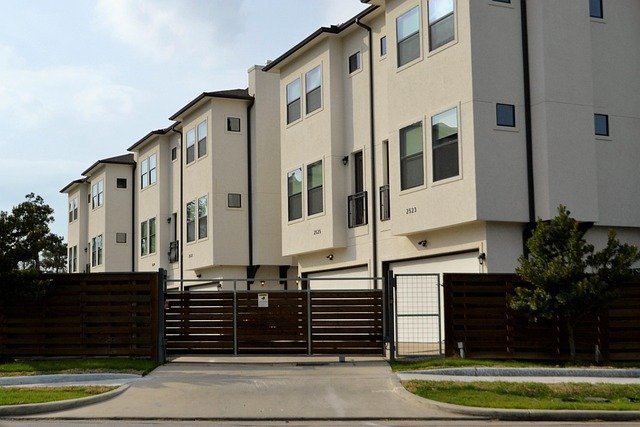What Are the Hidden Gems in the Apartment Rental Market?
Finding the right place to call home involves more than scanning listings and comparing prices. The apartment rental market is filled with opportunities that often go unnoticed by those who focus solely on obvious factors like square footage or proximity to major landmarks. By digging deeper and considering less conventional aspects, renters can discover options that offer exceptional value, comfort, and alignment with their personal needs.

The apartment rental market can feel overwhelming, especially in competitive areas where demand outpaces supply. While many renters focus on the most visible aspects of a property, such as the number of bedrooms or the monthly rent, there are countless overlooked features and strategies that can lead to discovering truly exceptional living spaces. These hidden gems often provide better value, enhanced quality of life, and a stronger sense of community than more prominent listings.
Successful apartment hunting requires a shift in perspective. Instead of simply reacting to what is immediately available, renters who take the time to research their surroundings, prioritize their must-haves, and assess how a property fits into their daily routines are more likely to find spaces that exceed expectations. Understanding the nuances of the rental market and knowing what to look for can transform the search process from stressful to rewarding.
Understand Your Locale
Before committing to a rental property, it is essential to thoroughly research the neighborhood and surrounding area. A beautiful apartment loses much of its appeal if it is located in a zone that does not align with your daily needs or long-term goals. Start by exploring local services such as grocery stores, pharmacies, healthcare facilities, and public transportation options. Proximity to these essentials can significantly impact your quality of life and reduce time spent commuting or running errands.
Beyond practical considerations, take time to assess the character of the neighborhood. Walk around at different times of day to get a sense of the atmosphere, noise levels, and overall safety. Look for green spaces, community centers, and cultural amenities that contribute to a vibrant living environment. Renters who invest time in understanding their locale often discover areas that are undervalued by the broader market but offer exceptional livability and potential for appreciation.
Additionally, consider future developments in the area. Neighborhoods undergoing revitalization or infrastructure improvements may offer rental opportunities at current market rates while promising enhanced amenities and increased property values in the near future. Staying informed about local planning initiatives can help you identify these emerging hidden gems.
Essential Amenities Checklist
Creating a comprehensive checklist of essential amenities is a critical step in identifying the right rental property. While every renter has unique needs, certain features consistently contribute to comfort, convenience, and long-term satisfaction. Start by listing non-negotiable items such as in-unit laundry, adequate storage space, reliable heating and cooling systems, and secure entry points. These foundational amenities can dramatically affect your daily experience.
Next, consider amenities that enhance lifestyle quality but may not be immediately obvious. High-speed internet infrastructure, soundproofing between units, natural lighting, and energy-efficient appliances can all contribute to a more enjoyable living environment. Pet-friendly policies, flexible lease terms, and responsive property management are also valuable features that often distinguish exceptional rentals from average ones.
Do not overlook shared amenities within the building or complex. Access to fitness centers, communal workspaces, rooftop terraces, or bike storage can provide significant value without the cost of maintaining these features independently. When evaluating properties, weigh the availability and quality of these amenities against the overall rental cost to determine true value.
Lifestyle Compatibility
An often-underestimated factor in apartment selection is lifestyle compatibility. A rental property should not only meet your practical needs but also support the way you live, work, and socialize. Consider your daily routines, hobbies, and social preferences when evaluating potential homes. For example, if you work from home frequently, prioritize spaces with dedicated office areas, strong natural light, and minimal noise disruption.
Think about how the layout and design of the apartment align with your lifestyle. Open floor plans may suit those who entertain regularly, while compartmentalized spaces might better serve individuals who value privacy and defined functional areas. The building’s community culture also matters. Some complexes foster social interaction through organized events and shared spaces, while others cater to residents who prefer a more private, independent living experience.
Compatibility extends to practical considerations such as parking availability, pet accommodations, and guest policies. Renters with active social lives should verify guest parking options and overnight visitor rules. Those with pets need to ensure not only that animals are allowed but that the surrounding area offers suitable outdoor spaces for exercise and recreation. By prioritizing lifestyle compatibility, you increase the likelihood of long-term satisfaction with your rental choice.
Cost Considerations and Market Comparisons
Understanding the financial landscape of the rental market is crucial for identifying value opportunities. Rental prices vary significantly based on location, property age, amenities, and market conditions. In major metropolitan areas, one-bedroom apartments typically range from 1,200 to 3,000 per month, while similar units in suburban or smaller urban markets may cost between 800 and 1,800 monthly. Two-bedroom units generally command 30 to 50 percent higher rates.
When evaluating rental costs, consider the total financial picture beyond base rent. Additional expenses such as utilities, parking fees, pet deposits, and renter’s insurance can add 150 to 400 to monthly housing costs. Some properties include certain utilities in the rent, which can provide better overall value despite a higher advertised rate. Always request a complete breakdown of expected monthly expenses before signing a lease.
Below is a general comparison of typical rental market segments:
| Property Type | Average Monthly Cost | Typical Inclusions | Key Considerations |
|---|---|---|---|
| Studio Apartment | 900 - 2,200 | Water, trash | Limited space, efficient for singles |
| One-Bedroom | 1,200 - 3,000 | Varies by market | Balanced space and cost |
| Two-Bedroom | 1,600 - 4,500 | Varies by market | Suitable for roommates or families |
| Luxury Complex | 2,500 - 8,000+ | Many amenities, parking | Premium services and finishes |
| Older Building | 800 - 2,000 | Basic utilities | Lower cost, potential maintenance issues |
Prices, rates, or cost estimates mentioned in this article are based on the latest available information but may change over time. Independent research is advised before making financial decisions.
Timing and Negotiation Strategies
The timing of your apartment search can significantly impact both availability and pricing. Rental markets typically experience seasonal fluctuations, with peak demand occurring during spring and summer months when families prefer to move between school years. Searching during off-peak periods, particularly late fall and winter, often yields more negotiating leverage and better rental terms.
Do not hesitate to negotiate lease terms, especially in competitive markets or when dealing with individual landlords rather than large management companies. Potential negotiation points include monthly rent, lease duration, pet deposits, parking fees, and included utilities. Demonstrating financial stability through strong credit scores, employment verification, and references can strengthen your position during negotiations.
Additionally, consider the length of lease commitment. While standard one-year leases are common, some landlords offer reduced rates for longer commitments or may provide flexibility with month-to-month arrangements for a premium. Evaluate your anticipated housing needs over the coming months to determine which lease structure offers the best combination of flexibility and value.
Final Thoughts on Finding Your Ideal Rental
Discovering hidden gems in the apartment rental market requires patience, thorough research, and a clear understanding of your priorities. By focusing on locale familiarity, essential amenities, and lifestyle compatibility, renters can identify properties that offer exceptional value beyond surface-level features. The most rewarding rental experiences come from aligning housing choices with personal needs, daily routines, and long-term goals rather than simply selecting the first available option. Taking time to explore neighborhoods, ask detailed questions, and carefully evaluate all aspects of potential homes will ultimately lead to a living situation that enhances overall quality of life.



